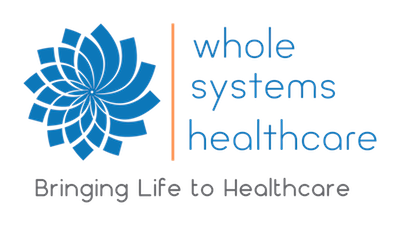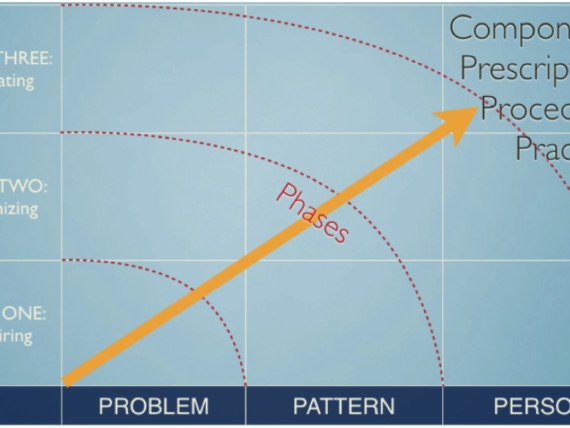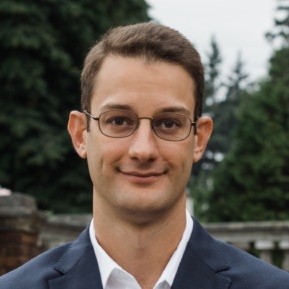The article is the second in a three part series on Our Model. If you have not read part one on The Healthcare Continuum, it can be found here.
The Idealized Strategy Flow , developed by Stargrove & Stargrove, is a comprehensive map that provides goal-oriented context for the inter-disciplinary practice of person-centered integrative medicine. Phase One involves treating a problem with prescriptions and procedures. The Problem frame is a physician-centric mode best applied in acute care, aimed at fixing a problem, from life-threatening, acute, to sub-acute/chronic symptom management.
© 2013 Stargrove & Stargrove
Phase Two involves deprogramming dysfunction and repatterning physiology, enhancing systemic coherence and feedback communications, and facilitating bodymind interactions in the Pattern frame through a continuum of physician-prescribed and person-directed treatments and practices based on the participatory analysis of emergent pattern dynamics.
The term bodymind is used in place of “mind-body” to be more illustrative of the unitary experience of the living organism, such as from the perspective of self-healing (physis), or the whole being described in psychosomatic network research (psychoneuroimmunology), or the nested living systems of ecology and systems biology.
The continuum of this Phase Two begins with addressing the person’s physiology to optimize healthy function of targeted system(s) (i.e., through endobiogenic medicine), thereby reducing the recurrence of diagnosed conditions and symptoms, and evolves through mental/emotional repatterning through guided observations and instructional practices.
By making informed choices, engaging in self-responsible behavior and responding to feedback, especially involving diet, activity and relationships, the person learns to shift the signal-to-noise ratio to enable greater clarity in perceiving the effects of attitudes, habits and behavioral choices. Phase Two unfolds as a gradual entrainment of coherence and enhancement of resilience throughout the whole bodymind system (i.e., tissues, organs, systems, metasystems, and their interplay with consciousness and subjective relationships) in an attempt to address their expressions as syndrome patterns, underlying unresolved dysfunctional relationships, and reactive tendencies.
In Phase Three, the physician is mainly acting as witness to the person rediscovering, activating, and manifesting health through consciously living a creative life. Here, the physician’s role is to provide feedback, encouragement, and reinforcement as the fully equipped and aware person takes responsibility for their symptom totality, constitutional strengths and susceptibilities, their character, and life destiny.
The patient utilizes self-cultivation practices, such as meditation, yoga, qigong, and art to support feedback from their choices and align and balance their self in the dynamic relationships involved in their individual life process. The Person frame is driven by the individual’s unique vision, values, needs, resources, limitations, and opportunities. According to Stargrove and Stargrove, the ultimate goal of all therapies is “to enhance systemic vitality, restore appropriate sensitivity to self and environment, and reestablish information flow of self-regulatory systems.”
The idealized strategy flow map provides process-oriented context for the respective roles of all kinds of providers involved in a truly integrative health care model, moving on a continuum from medically managing symptoms, whether life-threatening, acute or superficial, to self-actualization through activating the patient’s full healing and creative potential. Although not its original intended purpose, this map may be extrapolated to population-based health, where defined communities are understood in the context of managing/repairing problems (sanitation, infectious disease, nutrition, shelter, poverty), to patterns (optimized infrastructure, community empowerment, economic stability), to activation (community-motivated development).
Read about the Whole Systems Healthcare Map in part thee of Our Model here.



